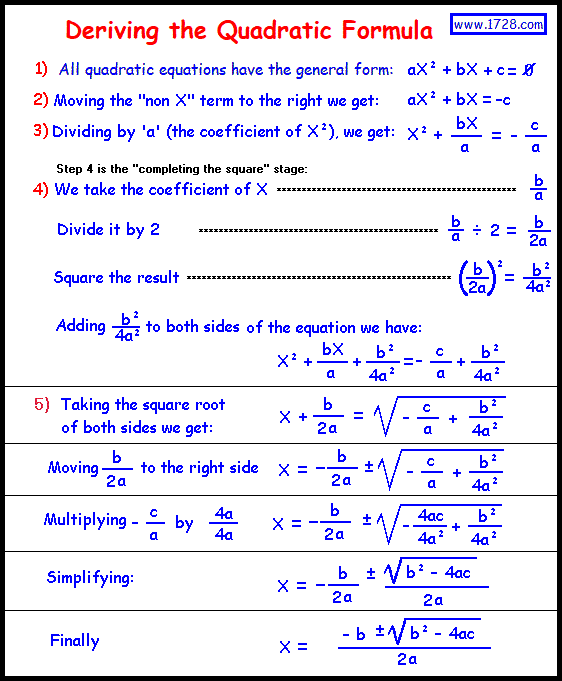First, let’s briefly discuss solving quadratic equations using a method called:
Completing The Square
Let’s see what a typical perfect square looks like.
(This will become apparent when you see Step 3 below)
Now, let’s choose an example Quadratic Equation:
Solving this by “completing the square” is as follows:
1) Move the “non X” term to the right:
2) Divide the equation by the coefficient of X² which in this case is 4
• take the coefficient of X
• divide it by 2
• square that number
• then add it to both sides of the equation.
In our sample problem
the coefficient of X is 3
dividing this by 2 equals 1.5
squaring this number equals (1.5)² = 2.25
Now, adding that to both sides of the equation, we have:
The Quadratic Formula
We can follow precisely the same procedure as above to derive the Quadratic Formula.

